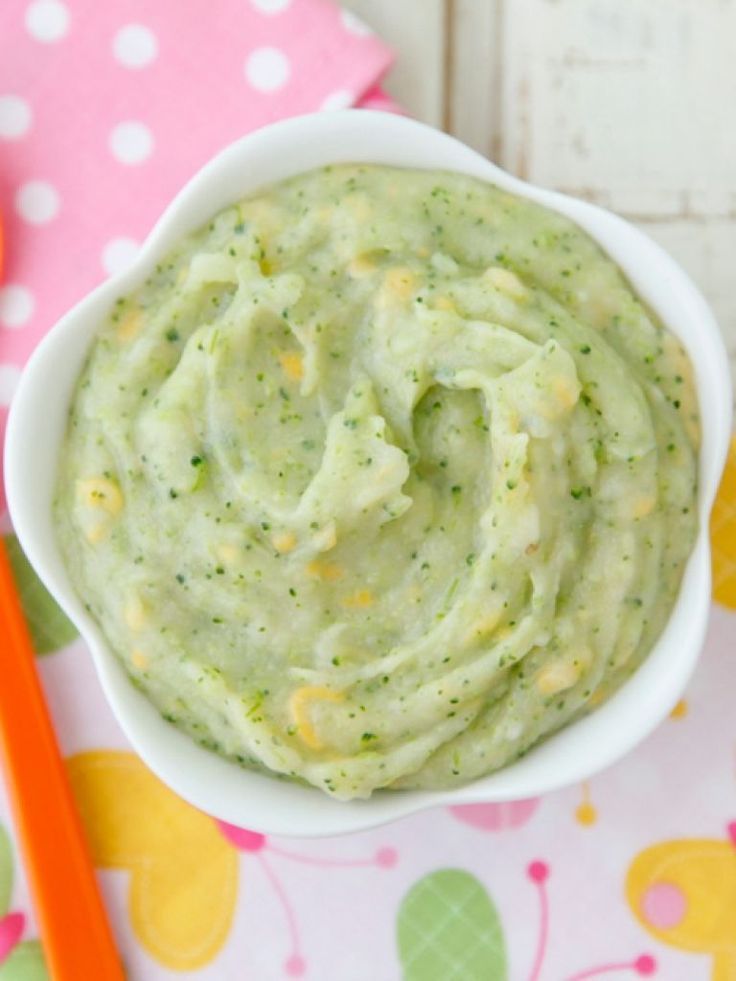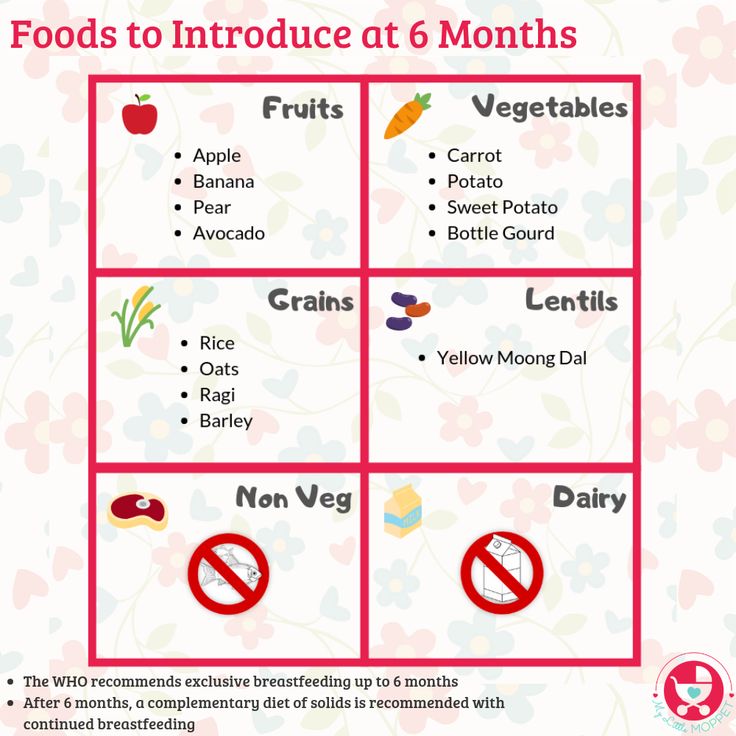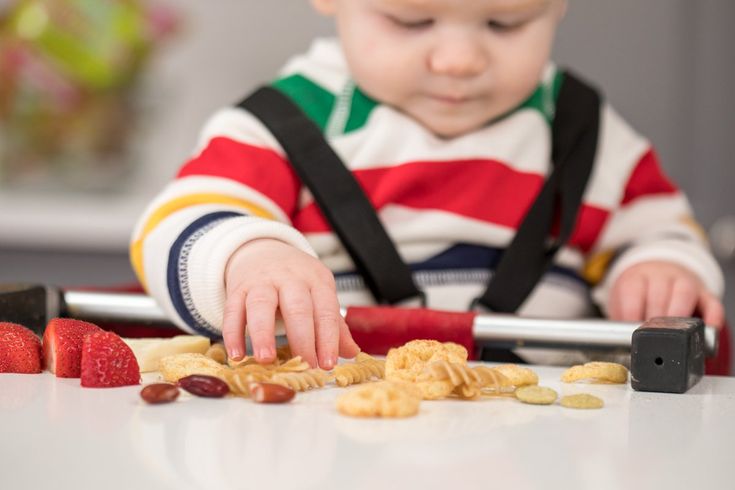Feeding babies sugar water
Sugar Water for Babies: Benefits and Risks
There may be some truth to Mary Poppins’ famous song. Recent studies have shown that a “spoonful of sugar” might do more than make medicine taste better. Sugar water might also have some pain-relieving properties for babies.
But is sugar water a safe and effective treatment to help soothe your baby? Some recent medical studies show that a sugar water solution may help reduce pain in infants.
Unfortunately, there are also risks to giving your baby sugar water. Read on to learn more about the treatment and when it should be used.
Some hospitals use sugar water to help babies with pain during a circumcision or other surgeries. At the pediatrician’s office, sugar water could be given to reduce pain when the baby is being given a shot, a foot prick, or having blood drawn.
“Sugar water is something that medical facilities and providers may use during a painful procedure on a young child to help with pain relief, but it’s not recommended for daily use at your home,” says Dr. Shana Godfred-Cato, a pediatrician at Austin Regional Clinic.
Sugar water should be administered by a pediatrician. They may administer it to your baby either by syringe into the infant’s mouth or by placing it on a pacifier.
“There is no standard recipe that has been studied, and I don’t recommend making it on your own,” says Dr. Godfred-Cato.
The mixture can be prepared at the doctor’s office or hospital, or it may come ready-made like a medication.
“The amount given per procedure is approximately 1 milliliter and contains a 24 percent sugar solution,” says Dr. Danelle Fisher, chair of pediatrics at Providence Saint John’s Health Center in Santa Monica, California.
One study published in the Archives of Disease in Childhoodfound that babies up to 1 year old cried less and may have felt less pain when given a sugar water solution before getting a vaccine shot. The sweet taste is believed to have a calming effect. It might work as well as anesthesia in some cases.
“Sugar water can help distract the baby away from the pain, compared to a baby who doesn’t get sugar water in a similar circumstance,” says Dr. Fisher.
But more research is needed in order to tell how exactly sugar water works for pain in newborns and the correct dosage needed to be effective.
Dr. Godfred-Cato says there are some studies that have found breast-feeding to be more effective than sugar water for reducing pain, if the mother is able to breast-feed during the procedure.
If given incorrectly, sugar water can have some potentially serious side effects. For this reason, it’s recommended that you use the treatment under a pediatrician’s supervision.
“If the mixture isn’t appropriate and the child gets too much pure water, it can cause electrolyte disturbances that may lead to seizures in severe cases,” says Dr. Fisher.
When the body gets too much water, it dilutes the amount of sodium, putting electrolytes off balance. This causes tissue to swell and can cause a seizure, or even put your child into a coma.
Other potential side effects include upset stomach, spitting up, and decreased appetite for breast milk or formula.
“Too much sugar water may affect the baby’s appetite for breast milk or formula, and a [newborn baby] should only take a fluid with nutrients and protein, not purely a liquid made of water and sugar,” says Dr. Fisher.
Currently, researchers don’t know enough about the potential risks and benefits to recommend sugar water for babies. There’s also no evidence to show sugar water would be helpful for minor discomforts like gas, upset stomach, or general fussiness. Don’t give sugar water to your baby without the supervision of a doctor.
Alternatively, there are many natural ways to soothe your baby at home. “Great ways to comfort an infant in pain include breast-feeding, use of a pacifier, skin-to-skin contact, swaddling, use of touch, talking to, and soothing your infant,” says Dr. Godfred-Cato.
Share on Pinterest
Sugar Water For Babies: Safe Or Unsafe?
Mix sugar in boiled water to make sugar water but follow the proper dosage to avoid health issues.
Research-backed
MomJunction believes in providing reliable, research-backed information to you. As per our strong editorial policy requirements, we base our health articles on references (citations) taken from authority sites, international journals, and research studies. However, if you find any incongruencies, feel free to write to us.
Image: Shutterstock
Sugar water for babies is often used for pain relief. It is prepared by dissolving regular sugar (sucrose or glucose) in water. The solution is commonly used in some cultures as a supplement with breast milk. However, it is not recommended to serve sugar water to babies, especially those younger than six months (1).
Read on to know the use of sugar water for babies and why it is not recommended.
Related: Water For Baby Formula: Which Type Should You Use?
Why Is Sugar Water Used For Babies?
There are several anecdotal and traditional uses of sugar water for babies.![]() Some of the common ones are listed here.
Some of the common ones are listed here.
- Aids in pain relief: In medical care, pharmaceutical-grade sugar water (or sweet sucrose water, as often called) is used to provide relief from pain. A research study showed that sterile sugar water could provide moderate pain relief caused by an intravenous procedure, such as the use of vaccine shots during routine immunization in neonates (2) (3).
Several other research studies documented the use of sugar water prior to surgeries or circumcision to provide pain relief to neonates and babies (4).
Image: iStock
- Support upset stomach: Sugar water or glucose water is often used as a home remedy to provide necessary hydration to babies with an upset stomach. Parents use homemade ORS (oral rehydration solution) made up of warm water, white sugar, and common salt.
- Might relieve constipation: Infant constipation is usually common in formula-fed babies and breastfed babies who are transitioning to solids.
 In both cases, sugar water is used as a traditional home remedy to relieve constipation. It is believed that sugar draws additional water into the small intestine and softens the stool. However, there are no clinical studies to support this belief. It is only a home remedy and constipated babies need to be consulted by a pediatrician.
In both cases, sugar water is used as a traditional home remedy to relieve constipation. It is believed that sugar draws additional water into the small intestine and softens the stool. However, there are no clinical studies to support this belief. It is only a home remedy and constipated babies need to be consulted by a pediatrician.
Image: iStock
- Is used for hiccups: In some cultures, sugar water is used to relieve hiccups in babies. However, clinical studies are sparse on this.
- Other purported uses: It was believed that sugar water could cure neonatal jaundice. However, on the contrary, research studies show that sugar water could be harmful in newborn jaundice (5). Doctors do not recommend sugar water to treat neonatal jaundice.
Sugar water is also considered a remedy for colic and gas. However, it is important for you to know that none of these uses are backed by scientific evidence.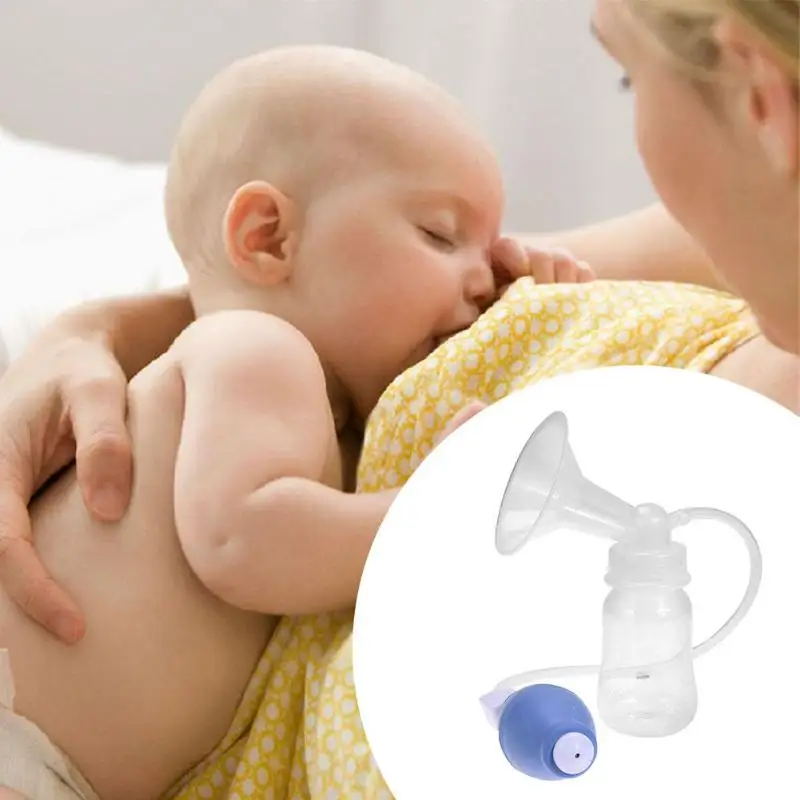
How Is Sugar Water Given To Babies?
Image: Shutterstock
The use of sugar water to relieve pain after a medical procedure should be done under medical supervision. A doctor may administer either through a syringe into the baby’s mouth or by placing it on a pacifier (6). Let the pediatrician decide and, if necessary, give sugar water to your baby.
If you want to manage pain at home, then the pediatrician can recommend appropriate medications or pain management techniques. You may also try psychological pain reduction strategies like NNS (non-nutritive sucking), breastfeeding, and skin-to-skin contact.
Related: Can Babies Have Maple Syrup? Safety And Alternatives
Why Is Sugar Water Not Recommended For Babies?
The World Health Organization (WHO) recommends “no use of water” for babies under six months of age (7). For babies older than six months, water can be introduced in small quantities. However, the use of sugar water needs to be avoided due to the following reasons.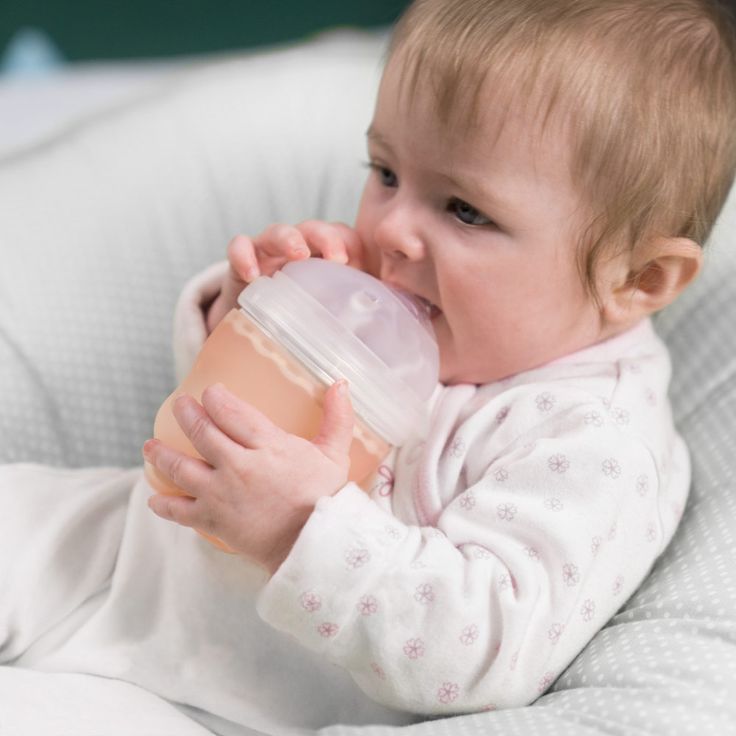
- Could suppress appetite: Sugar water prepared at home can be high in sugar, which can suppress appetite and reduce milk intake in exclusively breastfed infants (8). The same can be expected in formula-fed infants, where the frequency and duration of the feed could come down.
- Can cause electrolyte imbalance: Ingestion of excess sugar water increases the risk of disturbing the electrolyte balance in the body. In severe cases, a baby may even experience water intoxication that can cause seizures.
- Baby might develop a preference for sweet foods: Generally, babies are born with a preference for sweet food. Regular intake of sugar water during their weaning phase may cause them to develop a preference for sweet foods. Besides, sugar water use does not serve any nutritional purpose.
Image: Shutterstock
- Possible exposure to certain health risks: Consumption of excess sugar water can put a baby at an increased risk of excess weight gain, dental cavities, heart disease, diabetes, and fatty liver disease (9).
 This concern is crucial, especially in babies who are on infant formula, which may contain sugar in various forms, like corn syrup.
This concern is crucial, especially in babies who are on infant formula, which may contain sugar in various forms, like corn syrup.
Excess sugar water intake may even cause an upset stomach and spit-up in babies.
If you intend to try sugar water for your baby older than six months, then you should do so after consulting a pediatrician.
Related: Coconut Water For Babies: Safety, Health Benefits, And Side Effects
How Is Sugar Water Prepared For Babies?
Image: Shutterstock
There is no standard recipe to prepare sugar water at home. Try to use as little sugar as possible. Here is one such recipe that you may try under pediatric guidance.
You will need:
- 1 cup plain water (boiled)
- 1tsp sugar
How to:
- Let the boiled water cool until it becomes slightly warm. Take a cup of water and add one teaspoon of sugar to it.
- Mix the sugar in water thoroughly.
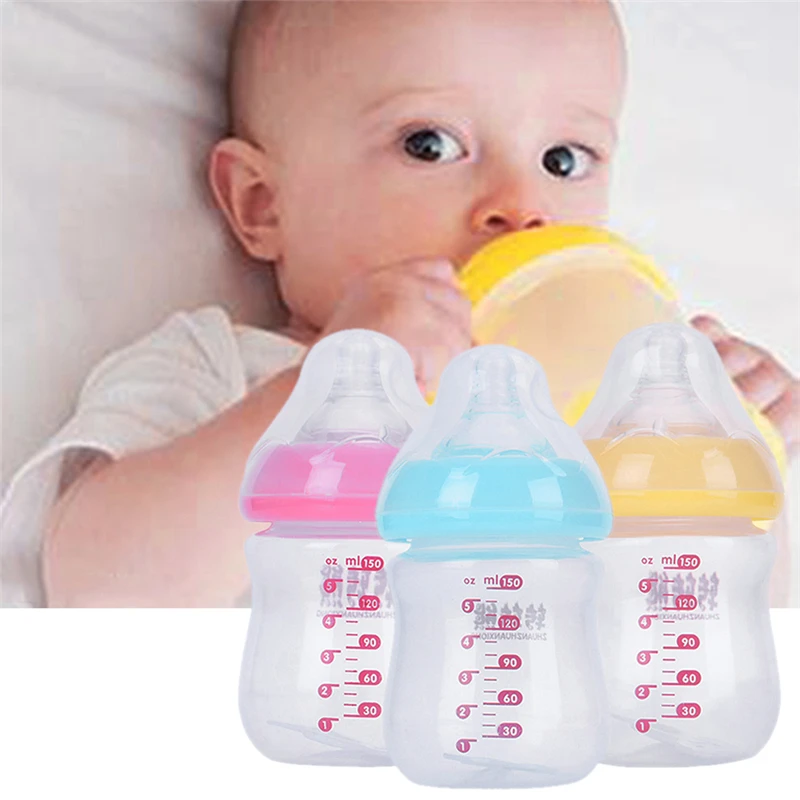 Ensure no granules are left as they could block the nipple of the bottle.
Ensure no granules are left as they could block the nipple of the bottle.
- Taste a drop of the mix. If you feel it is concentrated, then add additional water. However, do not add more than 10-20ml since excess water could dilute the solution.
Note: Avoid giving more than the recommended amount of sugar water to your baby. A concentrated sugar solution can have detrimental effects on an infant’s health, in the long run. Therefore, use it only when required.
1. How much sugar water do I give to my baby?
Your pediatrician is the best person to decide whether you should give your baby sugar water and in what quantities.
2. Does sugar water make babies sleep?
Anecdotally, it is believed that sugar water can distract the baby from pain and may have a calming effect on them. However, there isn’t enough medical research to support the belief. It is suggested to refrain from using sugar water to make the babies fall asleep and try other natural methods.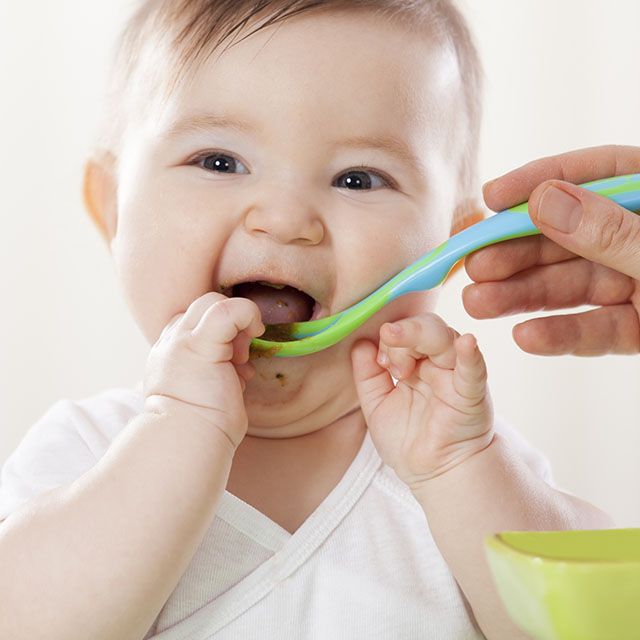
Using sugar water for babies to relieve pain, constipation, or other signs of discomfort is not advised unless recommended by the pediatrician. Administering too much sugar water at a young age increases the risks of electrolyte imbalance in the body. Also, it makes the baby prone to weight gain and related health issues. If your baby shows signs of colic, consult a healthcare provider or a pediatrician and ask for a safer alternative to sugar water.
Key Pointers
- Sugar water relieves pain, stomach issues, and jaundice in babies.
- However, it is not recommended for babies below six months of age.
- It may cause them to lose their appetite or develop a sweet tooth, eventually posing a risk for dental issues.
- Consult your child’s pediatrician for other remedies and learn the right amount of sugar water to administer to your baby.
References:
MomJunction's articles are written after analyzing the research works of expert authors and institutions. Our references consist of resources established by authorities in their respective fields. You can learn more about the authenticity of the information we present in our editorial policy.
Our references consist of resources established by authorities in their respective fields. You can learn more about the authenticity of the information we present in our editorial policy.
1. Breastfeeding: Getting Started; Stanford Children’s Health
2. Anna Taddio et al.; Effectiveness of sucrose analgesia in newborns undergoing painful medical procedures; National Center For Biotechnology Information
3. Denise Harrison et al.; Efficacy of sweet solutions for analgesia in infants between 1 and 12 months of age: a systematic review; BMJ
4. Analgesic Properties of Oral Sucrose During Routine Immunizations; American Academy of Pediatrics
5. Breastfeeding And Jaundice; American Pregnancy Association
6. Pain and Your Infant: Medical Procedures, Circumcision and Teething; Michigan Medicine
7. Infant and Young Child Feeding; WHO
8. Hasan Boskabadi and Sepideh Bagheri; Comparison between infants receiving traditional supplements (camel thorn, flix weed, and sugar water) and exclusively breast fed infants; National Center For Biotechnology Information
9. Recommended Drinks for Young Children Ages 0-5; Healthy Children; American Academy of Pediatrics
Recommended Drinks for Young Children Ages 0-5; Healthy Children; American Academy of Pediatrics
The following two tabs change content below.
- Reviewer
- Author
Swati Patwal is a clinical nutritionist, a Certified Diabetes Educator (CDE) and a toddler mom with over eight years of experience in diverse fields of nutrition. She started her career as a CSR project coordinator for a healthy eating and active lifestyle project catering to school children. Then she worked as a nutrition faculty and clinical nutrition coach in different...
View Profile ›
Dr. Abinaya Mathankumar has around eight years of experience as a pediatrician and a lactation consultant. She did her MBBS from The Tamil Nadu Dr. M.G.R. Medical University in 2012 and completed her postgraduation in 2015. She currently practices at Sakthi Hospital, Thillaipuram, Tamil Nadu, specializing in newborn care and growth and development. She presented her paper on Pediatric Epilepsy.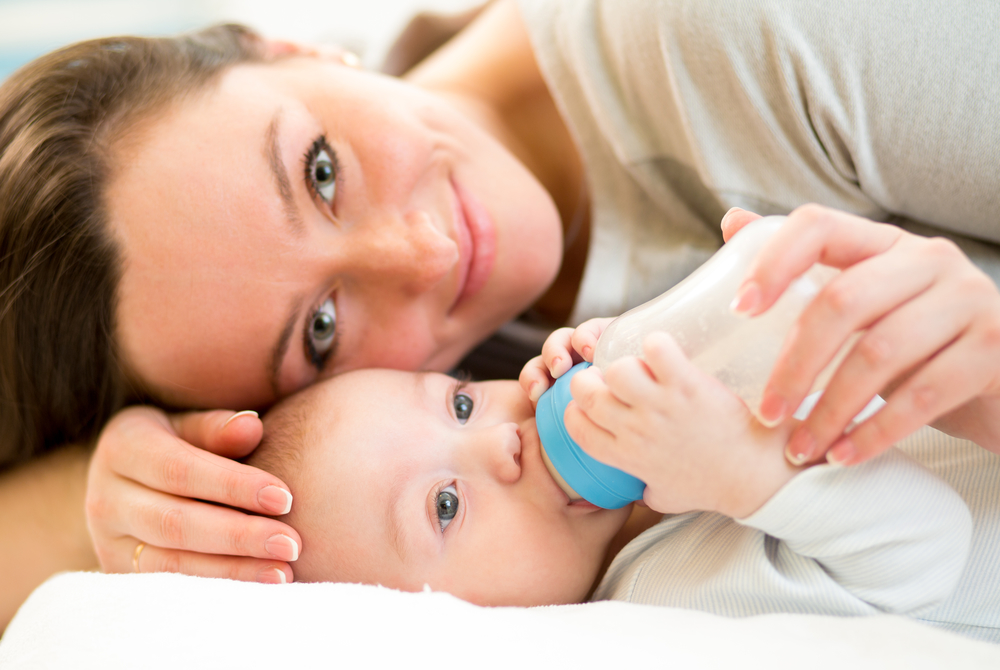 ..
..
View Profile ›
Sugar water for children: benefits and risks
od Oscar
Share on Pinterest
Maybe there is some truth in the famous Mary Poppins song. Recent studies have shown that a "tablespoon of sugar" can do more than just improve the taste of a medicine. Sugar water can also relieve pain in children.
But is sugar water a safe and effective way to soothe a baby? Some recent medical research suggests that a solution of sugar in water can help relieve pain in newborns.
Unfortunately, giving sweetened water to a child is also dangerous. Read on to learn more about the treatment and when to use it.
contents
Why is sugar water used for babies?
Some hospitals use sugar water to help children who fall ill during circumcision or other operations. In the pediatrician's office, you can give sugar water, which will reduce the pain of shooting, hitting the feet or taking blood.
“Sugar water is something that medical facilities and healthcare providers can use during a painful procedure for a young child to help relieve pain, but it is not recommended for daily use at home,” says Dr. Shana Godfred-Kato, pediatrician at the Regional clinic in Austin. .
How is sweet water given to children?
Sugar water must be provided by a paediatrician. They can give it to your child either by using a syringe in the child's mouth or by applying it to an exfoliator.
"There is no standard recipe that has been learned, and I do not recommend making it yourself," says Dr. Godfred-Cato.
The mixture can be prepared in a doctor's office or hospital, or it can be prepared as a medicine.
"The amount given per treatment is approximately 1 milliliter and contains a 24 percent sugar solution," says Dr. Danel Fisher, chairman of pediatrics at Providence St. John Medical Center in Santa Monica, California.
Is sweetened water effective for children?
One study published in the Archives of Childhood Illness found that infants under 1 year of age cry less and may experience less pain when they are given an aqueous sugar solution before vaccination. The sweet taste is believed to have a calming effect. In some cases, it can act as an anesthetic.
The sweet taste is believed to have a calming effect. In some cases, it can act as an anesthetic.
"Sugar water can help distract a child from pain compared to a child who doesn't get sugar water in similar circumstances," says Dr. Fisher.
But more research is needed to show exactly how sugar water affects pain in newborns and what exact dose is needed to achieve an effect.
Dr. Godfred-Kato says there are several studies that have shown that breastfeeding is more effective than sugar water in reducing pain if the mother can breastfeed during the procedure.
Why is it dangerous to give sugar to a child?
Sugary water can have potentially serious side effects if used incorrectly. For this reason, it is recommended to use treatment under the supervision of a pediatrician.
“If the formula is not suitable and the baby gets too much pure water, it can cause electrolyte imbalance, which in severe cases can lead to seizures,” says Dr. Fischer.
When the body gets too much water, it dilutes the amount of sodium, throwing electrolytes out of balance. This causes tissue swelling and can cause seizures or even put the child in a coma.
Other potential side effects include upset stomach, regurgitation, and decreased appetite for breast milk or formula.
"Too much sugar water can affect a baby's appetite for breast milk or formula, and [newborns] should only take liquids and nutrient fluids, not just water and sugary fluids," Dr. Fischer says.
Next Steps
At present, little is known about the potential risks and benefits of recommending sugar water for children by researchers. There is also no evidence that sugar water is helpful for minor discomforts such as gas, indigestion, or general nausea. Do not give white sugar water without medical supervision.
There are also many natural ways to soothe your baby at home. “Good ways to soothe babies in pain include breastfeeding, using powder, skin-to-skin contact, stretching, touching, talking, and soothing the baby,” says Dr.![]() Godfred-Cato.
Godfred-Cato.
Share on Pinterest
Childhood Diabetes | Prevention | GBUZ "City Polyclinic No. 6 of Novorossiysk" MH KK
Diabetes mellitus in children: causes, symptoms and signs, diagnosis, treatment.
Diabetes mellitus is a disease characterized by chronically high blood sugar (glucose) levels. Diabetes mellitus ranks first among all endocrine diseases in children. Diabetes mellitus in children is relatively acute and without appropriate treatment, as a rule, acquires a severe, progressive course. This development of diabetes in children is due to the intensive growth of the child's body and, accordingly, increased metabolism.
Diagnosis of diabetes in children is based on identifying the symptoms of the disease and determining the concentration of glucose and insulin in the blood. Treatment of diabetes mellitus in children includes diet, dosed exercise, treatment with insulin preparations.
Forms of diabetes in children.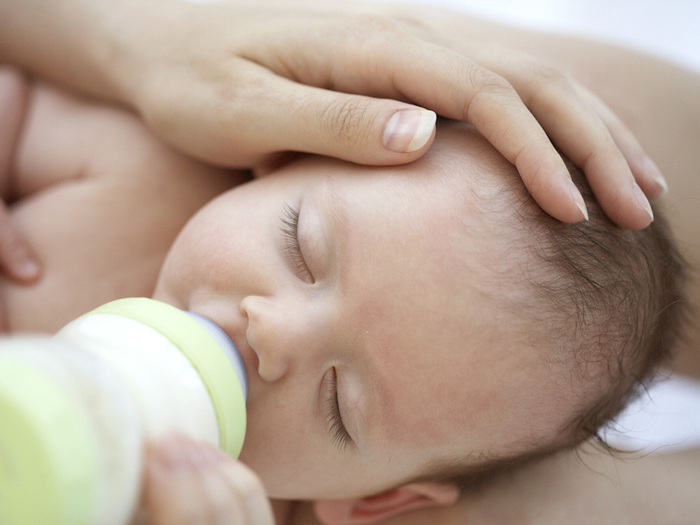 There are two main types of diabetes mellitus:
There are two main types of diabetes mellitus:
- Insulin-dependent diabetes (type 1 diabetes).
- Non-insulin dependent diabetes (type 2 diabetes).
While type 2 diabetes mellitus predominates among adults, type 1 diabetes mellitus (insulin-dependent) predominates among children.
Type 1 diabetes mellitus is characterized by very low levels of insulin in the blood, as a result of which the diabetic child is dependent on insulin treatment.
Features of the development of diabetes in children
A child's pancreas (an organ that produces the hormone insulin) is very small. By the age of 10, the mass of the child's pancreas doubles, reaching a size of 12 cm and a weight of just over 50 g. The production of insulin by the pancreas is one of its most important functions, which is finally formed by the fifth year of a child's life. It is from this age and up to about 11 years that children are especially susceptible to diabetes.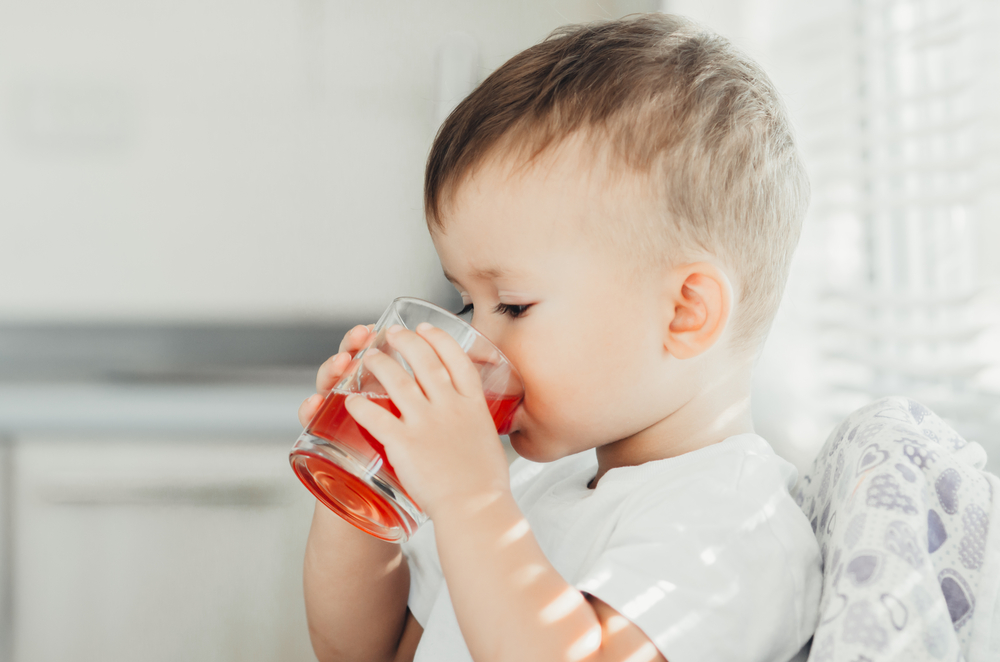 All metabolic processes in a child's body proceed much faster than in an adult. Carbohydrate metabolism (assimilation of sugars) is no exception. Accordingly, a child needs to consume 10 g of carbohydrates per 1 kg of weight per day. Therefore, all children are very fond of sweets - this is a natural need of their body. The metabolism of carbohydrates is also affected by the nervous system of the child, which is not yet fully formed, therefore it can malfunction and also affect blood sugar levels. Contrary to popular belief, even the consumption of significant amounts of sweets in childhood does not lead to the development of diabetes.
All metabolic processes in a child's body proceed much faster than in an adult. Carbohydrate metabolism (assimilation of sugars) is no exception. Accordingly, a child needs to consume 10 g of carbohydrates per 1 kg of weight per day. Therefore, all children are very fond of sweets - this is a natural need of their body. The metabolism of carbohydrates is also affected by the nervous system of the child, which is not yet fully formed, therefore it can malfunction and also affect blood sugar levels. Contrary to popular belief, even the consumption of significant amounts of sweets in childhood does not lead to the development of diabetes.
In general, the risk of developing diabetes is higher in premature, underdeveloped children, or adolescents during puberty. Also, the risk of developing diabetes is higher in children subject to significant physical exertion (for example, in pupils of sports schools).
The main cause of diabetes in children is a viral infection that destroys insulin-producing cells in the pancreas.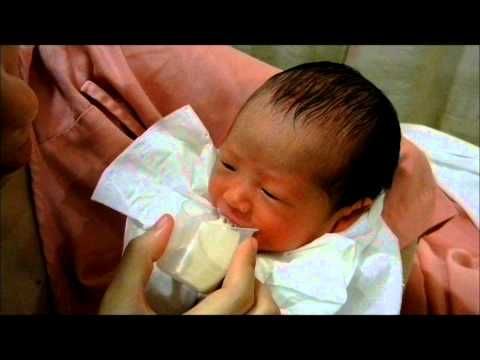 Among childhood infections, many can cause the development of diabetes (mumps, rubella, measles, etc.). In this regard, one of the most important measures to prevent the development of diabetes in children is the timely vaccination of the child.
Among childhood infections, many can cause the development of diabetes (mumps, rubella, measles, etc.). In this regard, one of the most important measures to prevent the development of diabetes in children is the timely vaccination of the child.
The course of diabetes mellitus in children also depends on the age of the child at which the disease began. The younger the child with diabetes, the more severe it is and the greater the risk of various complications. As a rule, once having arisen, diabetes in a child never goes away. A child with diabetes will need supportive care throughout his life.
Risk factors for diabetes in children
There are a number of risk factors that contribute to the development of diabetes in children. The presence of one or more risk factors greatly increases a child's chances of developing diabetes. Risk factors for diabetes in children:
- children born to diabetic mothers
- both parents of the child have diabetes mellitus
- frequent acute viral diseases
- birth weight exceeded 4.
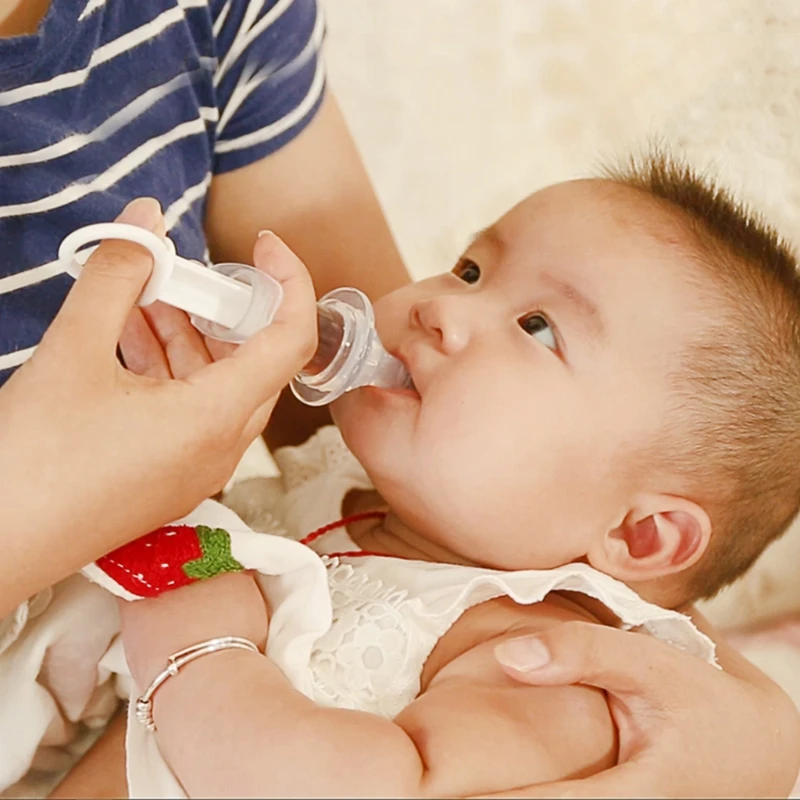 5 kg
5 kg - other metabolic disorders (hypothyroidism, obesity)
- immunosuppression
Symptoms of diabetes in children are almost the same as in adults:
- thirst
- weight loss
- excessive urine output (more than 2-3 liters per day)
- severe infections
- fatigue, inability to concentrate
Parents do not always notice these symptoms, which makes it difficult to detect diabetes in children. Despite the difficulty in identifying the symptoms of diabetes in a child, there are characteristic signs of diabetes in children that make it easier to identify the disease. So, for example, an important symptom of diabetes is bedwetting. Children with diabetes produce 2-4 times more urine than healthy children. Also, in children with diabetes, skin lesions (furunculosis), itching of the skin, etc. often occur. In infants, diabetes mellitus is accompanied by indigestion (diarrhea, constipation, vomiting), anxiety.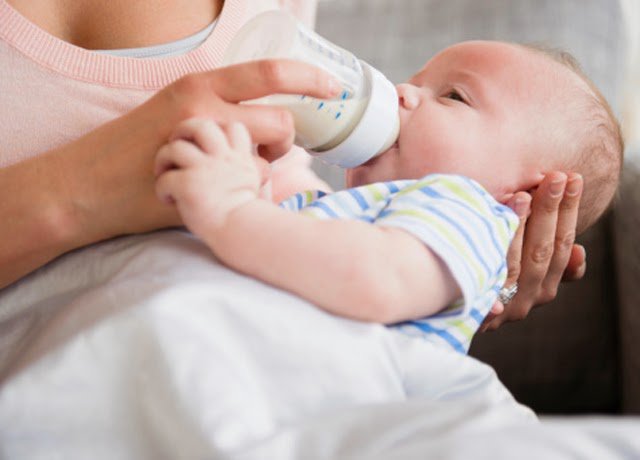 A diabetic child suckles a lot and greedily at the breast or drinks water. From sweet urine, linen and diapers become hard, crispy. These symptoms are often observed in moderate or severe diabetes mellitus. In mild diabetes mellitus, sick children may have little to no complaints or signs of illness, and the diagnosis is based on blood and urine sugar levels.
A diabetic child suckles a lot and greedily at the breast or drinks water. From sweet urine, linen and diapers become hard, crispy. These symptoms are often observed in moderate or severe diabetes mellitus. In mild diabetes mellitus, sick children may have little to no complaints or signs of illness, and the diagnosis is based on blood and urine sugar levels.
Treatment of diabetes in children.
Treatment of diabetes in a child includes: exercise, diet, medication.
Exercise for children with diabetes
Exercise increases the sensitivity of body tissues to insulin and lowers blood sugar levels. In this regard, dosed physical activity is an important part of the treatment of children with diabetes. It should be emphasized that only dosed physical activity is useful in diabetes, while uncontrolled physical activity in patients with diabetes mellitus contributes to the development of hypoglycemic conditions.
Proper exercise management in diabetic children necessarily includes the use of additional carbohydrates before, during and after exercise in accordance with the recommendations given by your doctor, as well as periodic monitoring of blood glucose levels.
It is important to measure blood glucose before, during and after exercise in order to correctly dose insulin with a short or intermediate duration of action.
Nutrition of a sick child plays an important role in the treatment of diabetes mellitus. The nutrition of a child with diabetes should meet all the requirements that are currently imposed on the nutrition of a healthy child: the diet should be as balanced as possible in all the most important ingredients (proteins, fats, carbohydrates and vitamins). Compliance with this condition allows children with diabetes to grow and develop normally. At the same time, a special diet eliminates the carbohydrate load and thus facilitates the course and treatment of diabetes.
In diabetes mellitus, they limit the use of such foods and dishes as bakery products made from wheat flour, potatoes, cereals (semolina, rice). Porridge is given to the child no more than once a day, using coarse grinding cereals (buckwheat, oatmeal, corn) for their preparation.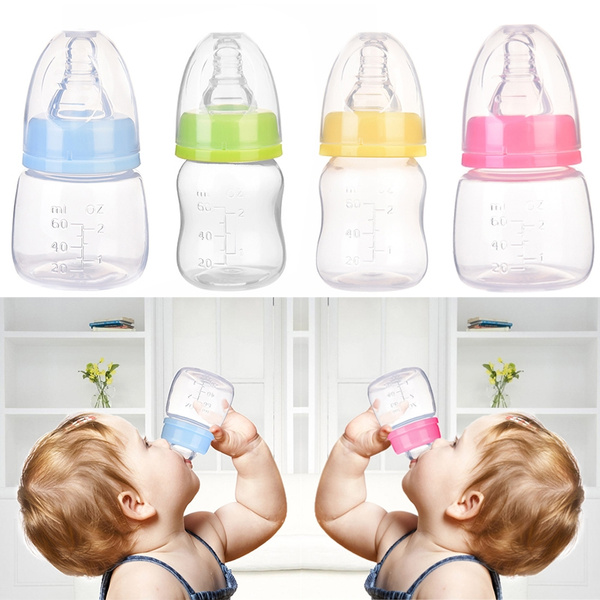
Rice, semolina and pasta should be used in limited quantities. The consumption of bread should not exceed 100g per day. Vegetables (everything except potatoes) can be offered to the child without restrictions. Moreover, dishes from various vegetables should make up a significant part of the daily diet of children.
Fruits and berries – unsweetened varieties of apples, black currants, cherries, etc. – are also widely included in the diet for diabetes. Occasionally, you can give your child citrus fruits (oranges, tangerines), strawberries, wild strawberries, raspberries. A child can eat fruits raw and in the form of compotes prepared with sugar substitutes.
Fatty, spicy and salty sauces, sweet sauces are excluded from the menu. If the child does not have liver diseases associated with diabetes, it is allowed to add a small amount of onion to food as a seasoning.
It is necessary to feed a child with diabetes 6 times a day and more often. The greatest satisfaction for the child, as a rule, brings his usual food. In view of this, when compiling a diet, the features of the family nutrition stereotype should be taken into account: the hours and volume of each meal, the child's eating habits. The composition of the child's diet should be agreed with the doctor observing the child.
In view of this, when compiling a diet, the features of the family nutrition stereotype should be taken into account: the hours and volume of each meal, the child's eating habits. The composition of the child's diet should be agreed with the doctor observing the child.
Drug treatment of diabetes in children.
Almost all children with diabetes receive insulin. Thanks to the introduction of long-acting insulin preparations into medical practice, as a rule, one injection of insulin per day is sufficient.
The choice of insulin preparation, its dosage and administration schedule are also determined by the attending physician. Tablets for diabetes (Maninil, Glipizide, etc.) are quite effective in treating diabetes in adults, but very rarely give good results in children. They are used in mild forms of the disease or prescribed as an adjuvant to reduce the number of injections or the dose of insulin.
Children and adolescents who are regularly treated, adhere to the diet exactly, develop well physically and mentally.



